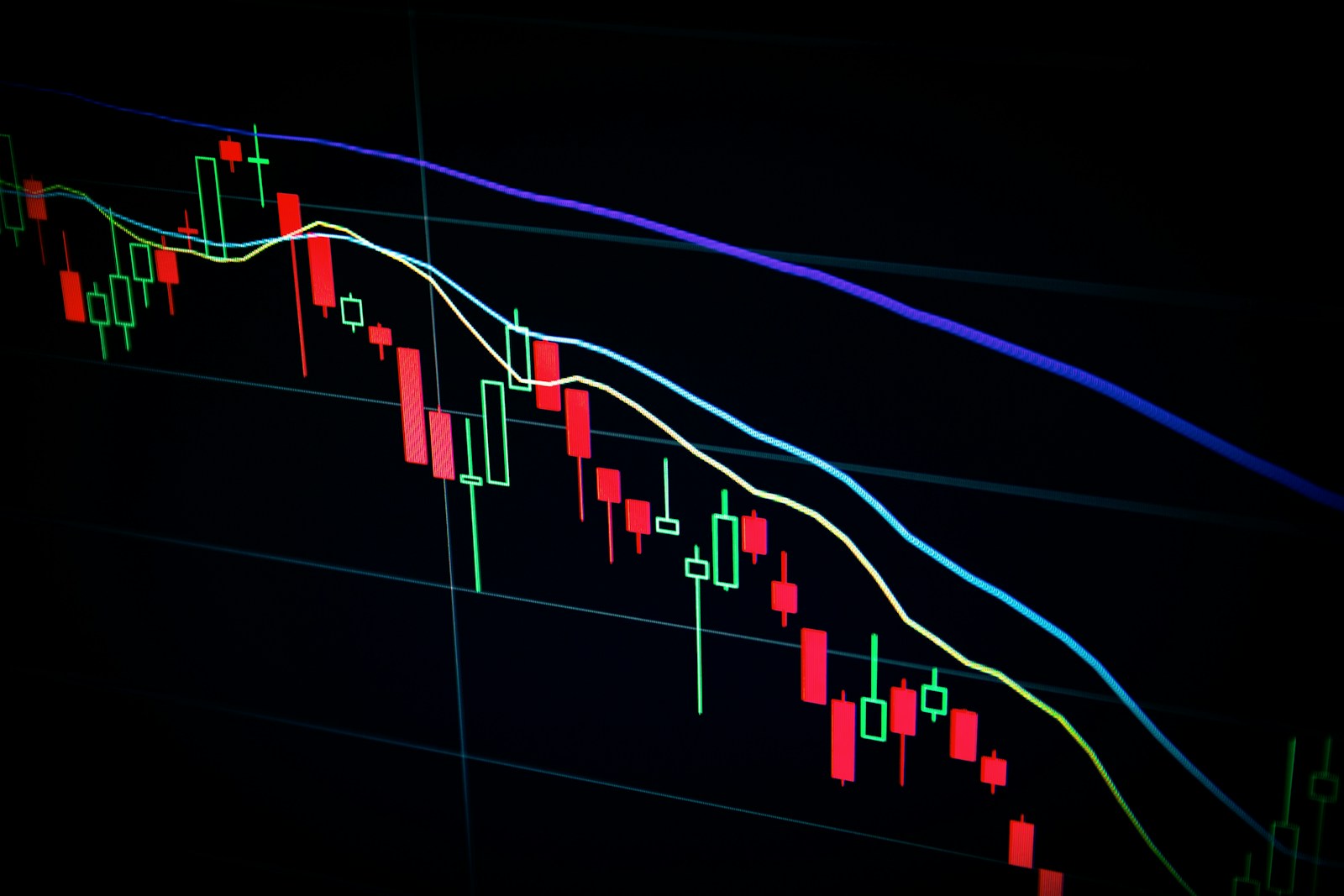Reducing expense ratios directly increases net returns. Even a 0.5% decrease in annual charges can add thousands of dollars over time. Focus on funds with low management expenses and avoid hidden fees that quietly erode growth.
Understanding the breakdown of your holdings’ expense structure is critical. Compare operating costs versus advisory fees to identify unnecessary drains. Index funds often provide a better ratio between cost and performance than actively managed options, especially over long periods.
Regularly reviewing transactional fees and commissions helps maintain efficiency. Minimizing turnover lowers taxable events and brokerage expenses. Simple shifts like consolidating accounts or selecting no-load funds support sustained wealth accumulation by keeping overhead minimal.
Investment fees: minimizing portfolio costs
Reducing the expense ratio is a primary method for improving net returns in any asset allocation. Even small differences in charges, when compounded over time, can significantly impact final gains. For instance, an annual ratio reduction of just 0.5% on a $100,000 holding could result in thousands of dollars saved after a decade. Therefore, selecting funds or instruments with lower ongoing charges is a key strategy to enhance overall yield without altering the risk profile.
Transaction expenses also contribute to the total drag on capital growth and deserve attention. Frequent rebalancing or active trading can accumulate substantial brokerage and spread costs that erode profitability. A practical approach involves limiting turnover rates by adopting passive management techniques or strategic interval adjustments, which reduces these operational outflows effectively.
Understanding Expense Ratios and Their Impact
The expense ratio represents annual management and administrative charges expressed as a percentage of assets under management. In equity index funds, ratios typically range from 0.03% to 0.50%, whereas actively managed alternatives may charge upwards of 1%. Data from Morningstar shows that funds with lower ratios tend to outperform their higher-cost counterparts over long horizons due to fewer deductions from gross returns.
- Example: Vanguard’s S&P 500 ETF (VOO) has an expense ratio around 0.03%, while similar active funds may exceed 1%, leading to material differences over time.
- Case Study: Over a 15-year period, an investor saving $10,000 annually in low-cost ETFs instead of higher-fee mutual funds could accumulate tens of thousands more due solely to reduced charges.
Another critical factor is bid-ask spreads within decentralized exchanges or crypto markets where liquidity varies widely. Narrower spreads lower implicit transaction costs during asset acquisition or liquidation phases. Choosing platforms with high trading volumes and optimized order books minimizes slippage, preserving more capital for compounding.
- Step One: Analyze average spreads for desired tokens across multiple venues before executing trades.
- Step Two: Utilize limit orders rather than market orders when possible to control execution price.
A comprehensive review should also include custody-related expenses such as wallet fees or staking commissions if applicable. These recurring payments can quietly decrease net proceeds if left unchecked. Comparing custodial services based on fee structures and security levels ensures better alignment with long-term financial goals while avoiding unnecessary deductions.
Identifying Common Fee Types
Understanding the various charges associated with managing a collection of assets is essential for enhancing net returns. Different expenses directly influence the overall yield, and recognizing these helps in making informed decisions to optimize capital allocation.
The primary categories of charges encountered include transactional costs, management expenses, and performance-related levies. Each impacts the final ratio of gains to outlays differently, and awareness of their structure allows for strategic adjustments.
Transaction Charges
Every trade executed incurs a commission or spread cost that affects liquidity efficiency. For example, cryptocurrency exchanges often apply a percentage-based fee on each purchase or sale. This can vary between 0.1% to 0.5%, depending on platform volume tiers or maker-taker models.
These operational outflows accumulate rapidly in active strategies like day trading or frequent rebalancing, eroding potential profits. Beginners should consider less frequent adjustments to reduce these expenses without compromising diversification goals.
Management Expenses
Ongoing administrative costs are typically expressed as an annual expense ratio charged by fund managers or custodians overseeing asset collections. In traditional markets, mutual funds might levy between 0.5% and 2% annually; similarly, certain crypto index funds or staking services impose comparable fees for portfolio oversight and operational support.
This recurring charge diminishes compound growth over time, particularly affecting long-term holding strategies. Comparing these ratios across providers enables selection of cost-efficient alternatives without sacrificing service quality.
Performance-Based Levies
Certain arrangements incorporate incentive fees tied to profit generation beyond predefined benchmarks. Hedge funds and some decentralized finance (DeFi) protocols apply a percentage cut–often around 20%–on earnings exceeding hurdles set for investors.
While aligning interests between managers and participants, these levies can significantly alter net returns during strong market phases. Evaluating such terms thoroughly ensures alignment with personal risk tolerance and return expectations.
Additional Operational Expenses
- Custody Fees: Charges for securely storing digital assets in wallets or vaults may be fixed or proportional to holdings.
- Withdrawal Fees: Some platforms impose fixed sums or percentage deductions upon asset redemption.
- Network Transaction Costs: Blockchain confirmation fees fluctuate based on network congestion; higher gas prices increase the expense of token transfers within decentralized systems.
A practical illustration involves Ethereum blockchain transactions where gas fees can spike from a few cents to several dollars during peak times, impacting small-value trades disproportionately. Planning operations during lower activity periods reduces unnecessary expenditure and preserves capital efficiency.
Comparing Fund Expense Ratios
Choosing funds with lower expense ratios significantly impacts the overall growth of an investment basket. An expense ratio represents the percentage of assets deducted annually to cover operational costs, including management and administrative charges. For example, a fund with a 0.10% ratio will cost $1 per $1,000 invested each year, whereas one at 1% deducts $10 for the same amount. Even seemingly small differences can compound over time, reducing net gains and affecting long-term accumulation.
Evaluating these deductions alongside projected returns is vital to ensuring that asset allocation remains efficient. In cryptocurrency index funds or ETFs tracking blockchain-related sectors, expense ratios tend to vary widely due to differing management strategies and liquidity profiles. A fund charging 0.25% may outperform another with a 0.05% ratio after factoring in fees if it consistently delivers higher gross returns, but investors should scrutinize whether the incremental performance justifies the added outflow.
Detailed Comparison of Expense Ratios Across Fund Types
Expense ratios can be categorized by fund type–actively managed vs passive funds–and by asset focus. Passive funds often have lower ratios since they mirror indexes without frequent trading; many crypto index funds fall into this group with typical expenses around 0.03%-0.15%. Conversely, actively managed portfolios targeting emerging blockchain projects may charge from 0.75% up to 2%, reflecting research intensity and transaction volume.
A practical case study involves comparing two Ethereum-focused ETFs: Fund A with a 0.07% expense ratio vs Fund B at 1%. Over five years, assuming an average annual return of 12%, Fund A’s lower deductions preserve more capital growth despite similar underlying assets. The cumulative effect results in approximately 5-7% higher net returns when compounded annually, demonstrating how careful scrutiny of expense structures facilitates optimizing capital retention.
Negotiating Broker Commissions
Start by analyzing the commission structure your broker offers and identify areas where flexibility exists. Many brokers have tiered pricing models based on trading volume or account size, which can be leveraged to secure lower rates. For example, increasing trade frequency or assets under management often improves your cost-to-return ratio, thus enhancing overall gains.
Requesting a detailed breakdown of all charges helps pinpoint hidden expenses beyond standard commissions, such as transaction surcharges or platform fees. Armed with this data, you can negotiate reductions or waivers that directly impact net returns. A case study from cryptocurrency trading platforms demonstrated that negotiating a 15% reduction in commissions led to a 0.3% annual improvement in portfolio yield.
Strategies for Effective Negotiation
Approach discussions with clear evidence of your trading patterns and asset allocation to justify requests for better terms. Brokers are more willing to accommodate clients showing consistent activity and substantial holdings. For instance, institutional traders often benefit from bespoke agreements reflecting their unique turnover ratios and risk profiles.
Utilize competitive offers from alternative service providers as leverage during negotiations. Presenting quotes from other brokers can prompt your current provider to offer improved conditions rather than losing business. This tactic proved successful in multiple cases where clients secured up to 25% lower commission rates within the same market segment.
- Volume-based discounts: Higher frequency trades reduce per-trade charges.
- Loyalty incentives: Long-term clients may access preferential pricing tiers.
- Bundled services: Combining execution with advisory services can lower total expenses.
Always consider the trade-off between commission savings and service quality; cheaper options might affect execution speed or research access, potentially impacting return ratios negatively. Careful evaluation ensures that reduced transactional expenditures do not compromise the efficiency of capital deployment across asset classes.
Reducing Hidden Trading Costs
One effective approach to lowering indirect expenditures in asset management involves closely monitoring the bid-ask spread and trading volume of selected cryptocurrencies. Narrow spreads typically indicate higher liquidity, which reduces slippage during transactions and preserves a higher net return. For instance, comparing Bitcoin with lesser-known altcoins reveals that wider spreads in the latter can erode gains significantly, especially when frequent rebalancing occurs within a diversified basket.
Another critical factor is understanding the turnover ratio–how often assets within a collection are bought and sold over a certain period. Elevated turnover increases transaction charges and price impact costs, which cumulatively degrade overall performance. Studies have shown that portfolios with annual turnover exceeding 100% can experience returns diminished by up to 1-2% annually due to these hidden expenses, underscoring the importance of strategic holding periods and selective trade execution.
Technical Strategies for Curtailing Transaction Charges
Utilizing limit orders instead of market orders offers tangible benefits in reducing implicit trading expenses. Limit orders allow investors to specify desired prices, mitigating unfavorable price movements caused by market order executions. Additionally, batch trading–aggregating multiple smaller trades into fewer larger ones–can minimize network fees on blockchain platforms like Ethereum or Binance Smart Chain by decreasing gas consumption per transaction.
A practical example includes automated rebalancing protocols that trigger adjustments only once deviations surpass predefined thresholds rather than constant realignments. This method lowers activity-related charges without substantially impacting risk-return profiles. Furthermore, leveraging decentralized exchanges with lower commission structures or fee rebates incentivizes cost-efficient operations compared to traditional centralized counterparts.
Quantitative analysis supports incorporating metrics such as the Effective Spread and Implementation Shortfall when evaluating trade execution quality. By comparing realized prices against mid-quote benchmarks at order initiation, investors gain insights into indirect costs embedded in trades beyond explicit commissions. Integrating these indicators into decision-making frameworks promotes enhanced capital preservation and improved net results over time.
Utilizing Tax-Efficient Strategies: Optimizing Expense Management
Reducing the overall burden of charges directly improves the yield ratio across asset holdings. Strategically deploying tax-aware approaches–such as harvesting losses or deferring gains–can substantially lessen transactional outlays, thereby preserving more capital within the collection of investments.
For example, selectively realizing losses in a taxable account while maintaining long-term positions enhances after-tax returns by lowering realized expenses without disrupting the underlying allocation balance. Such techniques impact not only immediate fiscal results but also compound advantage over multiple cycles, promoting enhanced growth trajectories.
Key Technical Implications and Future Directions
- Enhanced capital efficiency: Employing tax-sensitive methods reduces unnecessary disbursements, which can otherwise erode net accumulation rates.
- Dynamic rebalancing: Integrating automated triggers to optimize timing around tax events minimizes frictional charges and preserves target ratios more precisely.
- Cross-asset coordination: Synchronizing strategies across traditional and crypto holdings enables holistic management of taxable events, aligning expense controls on multiple fronts.
Technological advances in blockchain analytics and smart contract automation promise to further streamline these processes. For instance, programmable wallets could automatically execute tax-loss harvesting at optimal moments based on real-time market data, reducing reliance on manual oversight and enhancing precision in cost containment.
The evolution of decentralized finance protocols may also introduce novel mechanisms for cost-sharing or deferral, allowing investors to maintain portfolio integrity with fewer immediate outflows. This emerging infrastructure supports more sophisticated expense ratio management that adapts fluidly to changing regulatory frameworks and market conditions.
In summary, prioritizing tax-aware frameworks is fundamental for minimizing cumulative expenditures throughout an investment lifecycle. Leveraging both current methodologies and anticipated innovations will enable participants to sustain healthier net returns while maintaining strategic alignment with their financial objectives.





